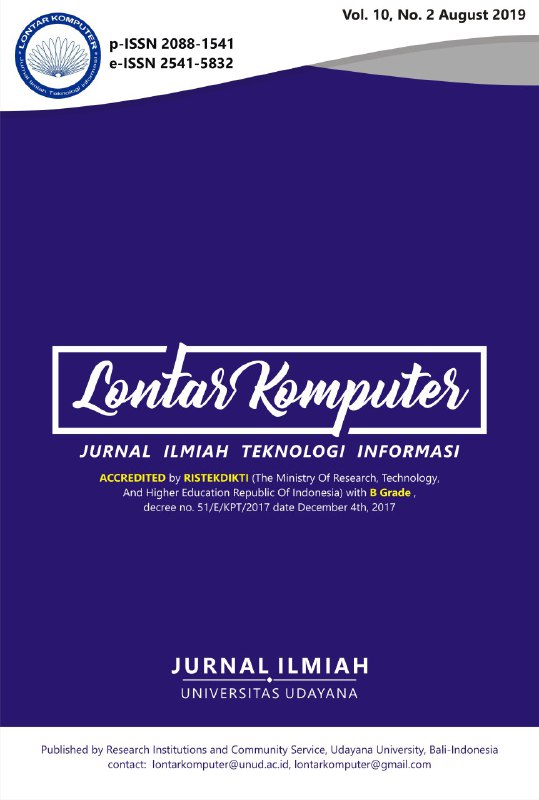Design of Autonomous Quadcopter Using Orientation Sensor with Variations in Load Fulcrum Point
Abstract
In designing the quadcopter, the main focus is stability and balance. Thus, in the more specific implementation, for example for aerial photography, a quadcopter can also be used as a load carrier. To be able to balance the quadcopter equipped with an orientation sensor on the controller, the orientation sensor includes a gyroscope sensor, accelerometer, and magnetometer. For this reason, it is necessary to have an autonomous stabilizer mechanism that can make the quadcopter stay in a stable and balanced condition even with the additional load. Furthermore, in this research, we will discuss how to determine the PID set points for quadcopter balance that can be tested on loads with different fulcrums. The test is limited to the condition of the quadcopter being hovered for pitch and roll angles. Based on the testing results, it can be concluded that there is a stability response in the Quadcopter. It can be seen from the RMS value obtained that it is by the steady-state tolerance of 2% -5% of the setpoint. Then, the Quadcopter can carry the maximum load with different fulcrums; 950g for fulcrum in the middle of the quadcopter, 580g for the load is placed 6 cm from the middle of the quadcopter, and 310g if the load is placed on one motor.
Downloads
References
[2] N. Ives, R. Pacheco, D. De Castro, R. Resende, P. Américo, and A. Magalhães, “Stability Control of an Autonomous Quadcopter through PID Control Law," Int. Journal of Engineering Research and Application, vol. 5 no.5, p.07-10 2015.
[3] M. A. Lukmana and H. Nurhadi, “Preliminary study on Unmanned Aerial Vehicle (UAV) Quadcopter using PID controller,” in 2015 International Conference on Advanced Mechatronics, Intelligent Manufacture, and Industrial Automation (ICAMIMIA), 2015, pp. 34–37.
[4] R. S. M. Sadigh, “Optimizing PID Controller Coefficients Using Fractional Order Based on Intelligent Optimization Algorithms for Quadcopter,” in 2018 6th RSI International Conference on Robotics and Mechatronics (IcRoM), 2018, pp. 146–151.
[5] M. I. Fadholi, Suhartono, P. S. Sasongko, and Sutikno, “Autonomous Pole Balancing Design In Quadcopter Using Behaviour-Based Intelligent Fuzzy Control,” in 2018 2nd International Conference on Informatics and Computational Sciences (ICICoS), 2018, pp. 1–6.
[6] A. Alkamachi and E. Erçelebi, “Modelling and Genetic Algorithm Based-PID Control of H-Shaped Racing Quadcopter,” Arabian Journal for Science and Engineering, vol. 42, no. 7, pp. 2777–2786, Jul. 2017.
[7] A. S. Wibowo and E. Susanto, “Performance Improvement of Water Temperature Control using Anti-windup Proportional Integral Derivative,” Lontar Komputer, vol. 9, no. 2, pp. 81-94, Aug. 2018.
[8] K. A. Tehrani and A. Mpanda, “PID Control Theory,” in Introduction to PID Controllers - Theory, Tuning, and Application to Frontier Areas, 2015.
[9] E. Kuantama, T. Vesselenyi, S. Dzitac, and R. Tarca, “PID and Fuzzy-PID Control Model for Quadcopter Attitude with Disturbance Parameter,” International Journal of Computers Communications & Control, vol. 12, no. 4, pp. 519-532, Jun. 2017.
[10] D. K. Tiep and Y.-J. Ryoo, “An Autonomous Control of Fuzzy-PD Controller for Quadcopter,” International Journal of Fuzzy Logic and Intelligent Systems, vol. 17, no. 2, pp. 107–113, Jun. 2017.
[11] R. Aisuwarya, E. Asri, “Rancang Bangun Robot Tank Automatik Pendeteksi Halangan dengan Kendali Fuzzy Logic,” Jurnal Information Technology and Computer Engineering., vol. 2, no. 01, pp. 7–18, Mar. 2018.
[12] S. Wibawa, A. Sudana, and P. W. Buana, “Sistem Komunikasi Modul Sensor Jamak Berbasiskan Mikrokontroler Menggunakan Serial Rs-485 Mode Multi Processor Communication (Mpc),” Lontar Komputer, vol. 7, no. 2 pp. 122-131, Aug. 2016.
[13] H. L. Chan and K. T. Woo, “Design and Control of Small Quadcopter System with Motor Closed Loop Speed Control”, International Journal of Mechanical Engineering and Robotics Research, vol. 4, no. 4, pp.287-292, Aug. 2015.
[14] M. Z. Mustapa, “Altitude Controller Design for Quadcopter UAV,” Jurnal Teknologi, vol. 74, no. 1, Apr. 2015.
[15] D. Kotarski, Z. Benic, and M. Krznar, “Control Design for Unmanned Aerial Vehicles with Four Rotors,” Interdisciplinary Description of Complex Systems : INDECS, vol. 14, no. 2, pp. 236–245, Mar. 2016.
The Authors submitting a manuscript do so on the understanding that if accepted for publication, the copyright of the article shall be assigned to Jurnal Lontar Komputer as the publisher of the journal. Copyright encompasses exclusive rights to reproduce and deliver the article in all forms and media, as well as translations. The reproduction of any part of this journal (printed or online) will be allowed only with written permission from Jurnal Lontar Komputer. The Editorial Board of Jurnal Lontar Komputer makes every effort to ensure that no wrong or misleading data, opinions, or statements be published in the journal.
 This work is licensed under a Creative Commons Attribution 4.0 International License.
This work is licensed under a Creative Commons Attribution 4.0 International License.























